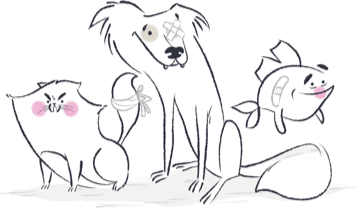Our dogs do strange things – but almost every odd behavioural trait means something. Here’s where some of their most common traits come from and what they mean.
ver wondered why your dog is hell bent on digging up the back garden? Or just why they take the first stages of furniture upholstery destruction so seriously while chasing their own tails until they are so dizzy they can't stand up? Recognising basic behavioural traits and understanding what each one means makes for a deeper bond between you and your dog, and can save your sofa from a chewing too.
Dog chewing
A new set of teeth coming through is painful for your puppy. In the same way that we soothe a baby’s teething, dogs benefit from chewing on things to alleviate the pain. If your dog is a little older and has decided to rip apart your sofa cushions or your favourite pair of shoes, it could be because they are suffering from separation anxiety. Getting a playmate, offering entertaining toys and arranging for lots of activities with a dog-walker or neighbour can help keep your dog occupied while you’re away and ease these behaviours.

"I've never known a doughnut to last this long."
Digging
Every dog loves a dig, and it’s actually an instinctive behaviour buried deep within your doggie’s DNA. Holes dug in the cool earth can preserve food, so dogs in natural packs will dig to hide or uncover food that they’ve already saved. If your dog spends too much time wrecking your lawn and uprooting the marigolds, then it may be time for some professional training, as digging is an ingrained behaviour that requires strict training to control.

"I swear there is something DOWN HERE."
Tail Chasing
While it might look alarming to see your dog or puppy chasing his own tail in an endless round of circles, it’s actually nothing to worry about. This behaviour typically starts young when the puppy doesn’t have any real self-awareness and so sees his tail as something separate (the same way a newborn will stare in fascination at their own fingers). It’s fun, and serves some deep-seated need to chase something, expend energy and be alert. But as with anything, if it is a behavior that starts suddenly or seems to be out of character for your dog, ask your vet for their advice.
Jumping up
Though it may seem like play behaviour, or an enthusiastic greeting, jumping up is a sign that your dog is attempting to assert its dominance over you. By encouraging jumping up with affection, you are reinforcing the behaviour. Best to ignore the dog (and don’t even make eye contact) to dissuade this behavior. Better yet, invest in some sessions with a trainer who can teach you and the dog how to manage this instinct more appropriately.
Dog biting
A dog will bite a person when they are scared, nervous or provoked. There are, however, ways to prevent a dog bite from ever happening if you stay in tune to the dog’s body language. A tensed body and intense stare, pricked ears and yawning are all pre-bite behaviours that are key to be aware of. The general rules to follow when confronted with an aggressive dog is to remain calm, don’t run, and avoid eye contact until the dog loses interest and backs away.
Reverse Sneezing
Your dog suddenly sucks air into his nose, while making a snorting, choking sound. Technically known as “paroxysmal respiration,” reverse sneezing sounds awful but really isn’t. Reverse sneezing is usually caused by the same things that trigger it in humans – namely, eating or drinking too quickly, sensing an irritant in the air, or a nasal infection.

"Achooofffff"
Panting
Dogs don’t have sweat glands distributed around their entire body, so they expel body heat through the pads of their feet and by panting. So when you see your dog pant, it’s simply trying to cool itself off. But keep a close eye, as panting is also how dogs cope with pain, so if you see your dog panting when they haven’t been active or they aren’t in a warm environment, take a closer look.
Dog barking
In nature, dogs bark to raise an alarm at the first signs of possible danger or to announce their presence and state of mind. As pets, your dog’s bark could mean one of many things – from excitement to fear or aggression. You can find a guide to identifying what your dog’s different barks mean, here.

"Yes, I'm talking to you, weird man in trenchcoat, drinking latte."








